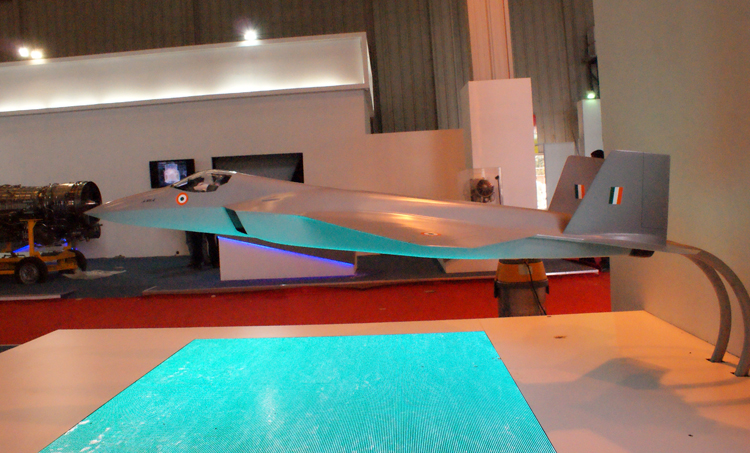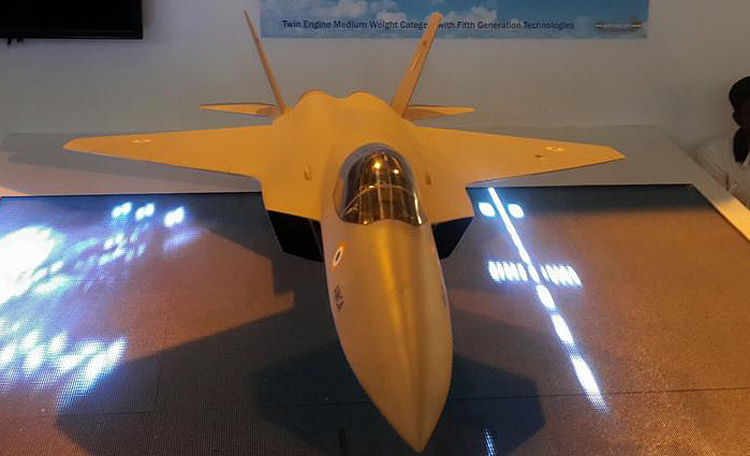INDIAN ARMED FORCES CHIEFS ON OUR RELENTLESS AND FOCUSED PUBLISHING EFFORTS

The insightful articles, inspiring narrations and analytical perspectives presented by the Editorial Team, establish an alluring connect with the reader. My compliments and best wishes to SP Guide Publications.

"Over the past 60 years, the growth of SP Guide Publications has mirrored the rising stature of Indian Navy. Its well-researched and informative magazines on Defence and Aerospace sector have served to shape an educated opinion of our military personnel, policy makers and the public alike. I wish SP's Publication team continued success, fair winds and following seas in all future endeavour!"

Since, its inception in 1964, SP Guide Publications has consistently demonstrated commitment to high-quality journalism in the aerospace and defence sectors, earning a well-deserved reputation as Asia's largest media house in this domain. I wish SP Guide Publications continued success in its pursuit of excellence.
- Prime Minister Modi Visits Punjab’s Adampur Air Base, Interacts with Airmen after Successful ‘Operation Sindoor’; Stern Message to Pakistan
- The layered Air Defence systems that worked superbly, the key element of Operation Sindoor
- Operation Sindoor | Day 2 DGMOs Briefing
- Operation Sindoor: Resolute yet Restrained
- India's Operation Sindoor Sends a Clear Message to Terror and the World – ‘ZERO TOLERANCE’
- Japan and India set forth a defence cooperation consultancy framework, talks on tank and jet engines
Indian Stealth Fighter
AMCA is an indigenous stealth fighter programme to develop fifth generation aircraft for the IAF and the Indian Navy (IN) which is also to include certain sixth generation technologies
 |
The Author is Former Director General of Information Systems and A Special Forces Veteran, Indian Army |

According to a report published on October 20, 2021, India is working on developing a stealth fighter by year 2025. This looks rather ambitious considering the longgestation period for developing the Tejas Mk-1 fighter and time taken for its induction into the Indian Air Force (IAF). Besides, the Tejas Mk-2, which is being designed and developed to replace multiple strike fighters of IAF like the SEPECAT Jaguar, Dassault Mirage 2000 and MiG-29 is still some years away. The first flight of Tejas Mk-2 is expected to be in 2023 with series production likely to begin by 2026.
The Defence Research and Development Organisation (DRDO) and Hindustan Aeronautical Limited (HAL) are jointly leading the effort for the stealth fighter programme by developing the Advanced Medium Combat Aircraft (AMCA). AMCA is an indigenous programme to develop fifth generation aircraft for the IAF and the Indian Navy (IN) which is also to include certain sixth generation technologies. Though designing of the AMCA is by the Aeronautical Development Agency under the DRDO, production of the AMCA will likely be through a public-private partnership, as a joint venture by DRDO, HAL and an Indian private company. According to another report, joint venture is likely to require investments of over 2,500 crore from the selected private company.
Though designing of the AMCA is by the Aeronautical Development Agency under the DRDO, production of the AMCA will likely be through a public-private partnership, as a joint venture by DRDO, HAL and an Indian private company
In 2010, the original Medium Combat Aircraft (MCA) programme was renamed AMCA and a detailed study was launched by ADA with IAF’s Air Staff requirements (ASR) issued in April 2010 placing the AMCA in the 25-tonne category. In October 2010, the Ministry of Defence (MoD) allocated 100 crore for the feasibility study to be completed in 18 months. During the project definition and preliminary design phase (November 2013 to December 2014) nine AMCA configurations were studied. In 2016, the IAF accepted the AMCA design and the project definition phase were completed by 2017.
It may be recalled that in 2018, India withdrew from the joint Russia-India Fifth Generation Fighter Aircraft (FGFA) programme which aimed to develop a new fighter based on Russia’s Su-57 fighter jet. This was reportedly because of some reservations on the stealth performance of the Russian Su-57 and production challenges of the Izdeliye 30 engine but more so because the FGFA programme militated against Prime Minister Narendra Modi’s directive of ‘Make in India’ since 2014.
Two variants of AMCA are to be produced in a phased production model. Mark-1 will be equipped with fifth generation technologies and Mark-2 will have the incremental sixth generation technology upgrades
The detailed design phase of AMCA had commenced in 2018. As part of this phase, a full scale model of AMCA is to be developed for testing the stealth features. The AMCA programme is to be executed in two phases: first, technology demonstration phase, and; second, full scale engineering development phase. AMCA will be a single-seat, twin-engine, stealth all-weather swing-role aircraft. Two variants of AMCA are to be produced in a phased production model. Mark-1 will be equipped with fifth generation technologies and Mark-2 will have the incremental sixth generation technology upgrades.

Designed with shoulder mounted diamond-shaped wings to reduce drag at transonic speeds and a stabilator V-tail with large fuselage mounted tail wing, AMCA will be the first fifth generation fighter aircraft to be fielded in the IAF. The AMCA will have some sixth generation characteristics such as an optionally manned directed energy weapons (DEWs) and capability to control unarmed combat aerial vehicles (UCAVs) and swarm drones. The design has inherent radar stealth achieved through platform edge alignment and serration, body conformal antenna and low intercept radar, diverterless supersonic inlet (DSI) with serpentine ducts which conceal engine fan blades, internal weapons bay and extensive use of composites in the airframe.
The current plan reportedly is to procure six squadrons of AMCA, first two squadrons of Mark-1 equipped with an imported engine and the balance four squadrons of Mark-2 equipped with an upgraded indigenous engine
The AMCA is expected to have distributed passive sensors with artificial intelligence (AI) assisted multi-sensor data fusion to increase situational awareness and to work in tandem with the advanced electronic warfare (EW) suite onboard. It will also have an integrated vehicle health monitoring system which works on sensor fusion. AMCA will be equipped with a larger and powerful variant of the ‘Uttam AESA Radar’ using gallium nitride (GaN) technology and will be mounted on a mechanically steerable mount. An onboard condition monitoring system is also planned to be included in the AMCA.
Recent reports had indicated that the ADA was expecting to obtain government approval for the AMCA programme by the second quarter of 2021 with 15,000 crore sanctioned for the programme to enable rollout of the first prototype by 2024. However, the government nod apparently is still awaited while we are already in the fourth quarter of 2021. Possibly the sanction may come by end 2021 or early 2022.
Aim is to start production of the AMCA by 2028 since already considerable work has been undertaken by multiple agencies on various technologies
The current plan reportedly is to procure six squadrons of AMCA, first two squadrons of Mark-1 equipped with an imported engine and the balance four squadrons of Mark-2 equipped with an upgraded indigenous engine. The Mark-2 of AMCA would also incorporate sixth generation features and technologies to stay relevant in the coming decades. Another report says that the aim is to start production of the AMCA by 2028 since already considerable work has been undertaken by multiple agencies on various technologies including stealth, engine, three-dimensional thrust vectoring, AESA radar, internal weapons bay, serpentine air intakes and all other major avionics.
Finally, achieving the above time schedule will no doubt be an extraordinary feat. Given the right impetus it may even be possible. But whatever the timeframe, the AMCA will certainly catapult India into a select league capable of manufacturing cutting edge aeronautical systems.





